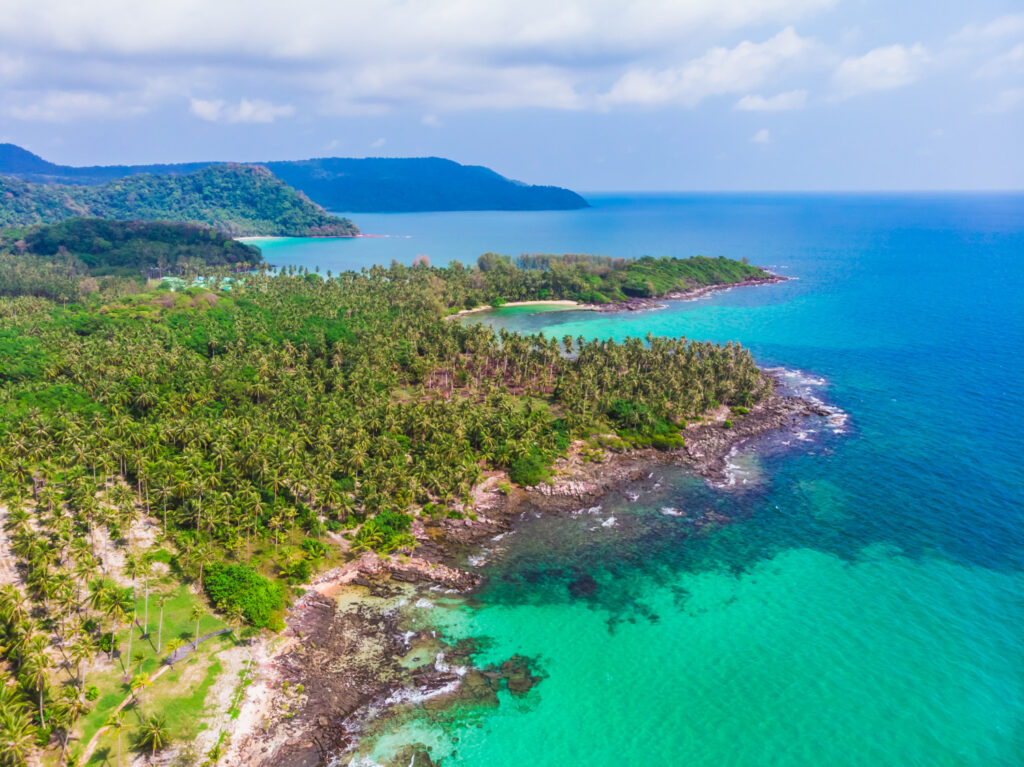India’s southernmost territory, Great Nicobar Island, is on the cusp of a historic transformation. The Great Nicobar Island Project is one of India’s most ambitious initiatives aimed at converting this remote island into a major center for trade, tourism, and strategic presence in the Indian Ocean Region (IOR). Spearheaded by the NITI Aayog and supported by multiple government agencies, the project will combine world-class infrastructure development with environmental safeguards, unlocking the island’s untapped potential.
This article explores the details of the project, its strategic significance, proposed infrastructure, environmental concerns, and its long-term impact on India’s economy and security.
Location and Significance of Great Nicobar Island

Great Nicobar is the largest of the Nicobar Islands, covering around 910 square kilometers, and is situated close to the Malacca Strait, a critical global maritime route through which nearly 40% of the world’s trade passes. Its location makes it a natural chokepoint for maritime security and trade monitoring.
The island is sparsely populated, with a population of around 8,000 people, including the indigenous Shompens and Nicobarese tribes. The development project aims to improve living standards, create job opportunities, and integrate the island more closely with India’s economic network.
Key Components of the Great Nicobar Island Project
The plan involves creating integrated infrastructure that will serve both civilian and strategic purposes. Here are the main components:
1. International Transshipment Terminal
One of the most significant features is the construction of a deep-draft transshipment port at Galathea Bay. This port will allow India to handle large container ships that currently dock in Colombo, Singapore, or Port Klang. This will strengthen India’s position in the global shipping network and reduce dependency on foreign ports.
2. Greenfield International Airport
The project includes a state-of-the-art greenfield airport, designed to handle both civilian and defense aircraft. This will boost tourism, improve connectivity, and serve as a critical asset for disaster management and defense operations.
3. Township Development
The island will see the creation of a modern township that can house over 3.5 lakh people by 2050. This township will include residential complexes, commercial zones, schools, and healthcare facilities, turning Great Nicobar into a self-sufficient economic hub.
4. Tourism Infrastructure
The pristine beaches, tropical forests, and unique biodiversity make Great Nicobar ideal for eco-tourism and adventure tourism. The project will focus on sustainable tourism infrastructure, including resorts, cultural centers, and nature trails.
5. Power and Digital Connectivity
To support this development, the island will get a robust power grid, renewable energy sources (especially solar), desalination plants for drinking water, and high-speed internet connectivity to support residents and businesses.
Strategic Importance of the Project
Strengthening India’s Maritime Presence
Great Nicobar’s proximity to the Malacca Strait makes it strategically vital. The development will allow India to monitor shipping lanes more effectively, protect its trade routes, and respond quickly to regional security challenges.
Supporting “Act East” Policy
By improving connectivity to Southeast Asia, the island will play a pivotal role in India’s Act East Policy, strengthening trade, investment, and cultural ties with ASEAN nations.
Disaster Response and Humanitarian Aid
The airport and port facilities will allow India to launch disaster relief operations faster in the Bay of Bengal and Indian Ocean regions, benefiting neighboring countries during crises like cyclones or tsunamis.
Environmental and Tribal Concerns
The Great Nicobar Island is home to dense tropical rainforests, unique coral reefs, and endangered species like the Leatherback Turtle. The project has faced scrutiny from environmentalists who warn against large-scale deforestation and ecosystem disruption.
To address these concerns, the government has mandated:
- Compensatory afforestation in mainland India to offset forest loss.
- Strict environmental monitoring to protect coral reefs and marine biodiversity.
- Relocation and rehabilitation plans that respect the rights of indigenous tribes.
- Implementation of eco-friendly technologies in construction and energy production.
Balancing development with conservation remains one of the most significant challenges of this project.
Economic Benefits of the Project
The Great Nicobar Island Project is expected to have a multi-layered economic impact:
- Job Creation: The construction phase alone will generate thousands of jobs, followed by long-term employment in logistics, tourism, and services.
- Boost to Trade: The transshipment terminal will make India a competitive player in the global shipping industry.
- Tourism Revenue: With better connectivity and infrastructure, Great Nicobar can become a premier eco-tourism destination.
- Regional Growth: The project will stimulate growth in neighboring islands and strengthen India’s overall presence in the Bay of Bengal region.
Challenges and Implementation
While the project has a clear roadmap, several challenges need to be addressed:
- Environmental clearances must be carefully handled to avoid irreversible ecological damage.
- Funding and phased development are crucial to prevent delays and cost overruns.
- Maintaining security during construction, given the island’s strategic location.
- Community engagement to ensure that indigenous populations benefit rather than being displaced.
The success of the project will depend on transparent governance, collaboration between central and local authorities, and active participation from private investors.
The Road Ahead
The Great Nicobar Island Project is not just about infrastructure—it is about creating a model of sustainable development that integrates strategic, economic, and ecological goals. If implemented correctly, this initiative will:
- Strengthen India’s position in the Indo-Pacific.
- Provide a blueprint for eco-sensitive development in other remote regions.
- Boost India’s connectivity with Southeast Asia and global markets.
With work expected to progress in multiple phases over the coming decade, the world will be watching as India turns its southernmost island into a beacon of progress and security.
Conclusion
The Great Nicobar Island Project is a landmark initiative that reflects India’s vision for the 21st century – a vision that combines economic growth, strategic strength, and environmental stewardship. While challenges remain, the potential rewards for the nation and the region are enormous. If executed with care, Great Nicobar could emerge as a model for sustainable island development, benefitting generations to come.

